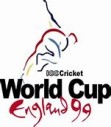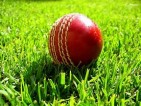A look back at South Africa’s 2001/02 Test tour of Australia
Marco Trevisiol |When South Africa toured Australia in the 2001/02 season it would be fair to say that the stakes were even higher than on South Africa’s previous two tours because apart from the obvious head-to-head battle, they were the two best sides going around. If South Africa could win this series, they could clearly claim being the best Test side in the world for the first time since readmission.
But beating Australia in Australia – tough enough in the 1990s – was even harder by the early 2000s as Australia had raised their level of play from being merely the best side in the world to being one of the best Test sides ever. They smashed the West Indies record of 11 consecutive Test wins by setting a new astonishing benchmark of 16 wins in the 1999-2001 period.
But even that staggering statistical achievement doesn’t tell the whole story about Australian cricket in this time. They didn’t just win matches, they destroyed opposition sides with a ruthlessness and delight not seen since the West Indies at their peak in the 1980s. They had all bases covered – great batsmen, great pacemen, a great spinner and a wicketkeeper in Adam Gilchrist who was so good with the bat that he revolutionised the role of the keeper/batsman.
South Africa had also been highly impressive in the previous couple of years – not just because they even managed to win a Test series in India, the one thing the Australian side had not been able to do. But because they’d had to deal with the trauma and humiliation of their revered captain Hansie Cronje being exposed as a match-fixer and his cricket career ended. Yet, under the leadership of Shaun Pollock they had continued on with great aplomb.
Australia/South Africa Test contests in the 1990s could sometimes be dour affairs with both sides (especially South Africa) having low scoring rates and only searching for a win when safety was reached. But there’d be no symptom of that in this series. Australia especially had raised their regular scoring rates to levels unthinkable even a decade before and they looked for victory from the toss of the coin. South Africa generally more purposeful and aggressive than they had been in the 1990s but not on Australia’s level. As the series was to show, they weren’t on Australia’s level in most areas.
The change in how Tests between the sides were played compared to the 1990s was well illustrated by the 1st Test in Adelaide. After 3 days Australia were marginally in front with a 68 run lead and 10 wickets in hand. If anything, the draw appeared to be the favourite as you could’ve expected Australia to be watchful and bat into the final day if need be before having a crack at their opponents.
But – as they showed constantly in this period – this Australian side never thought that way. Despite losing Justin Langer early on the 4th morning, Australia counterattacked superbly with Matthew Hayden (probably the epitome of the aggressive intimidation this side had) hitting an outstanding century. On a wearing 4th day pitch, Australia had managed to score at almost 4 runs an over, a pace inconceivable in Australia/South Africa 1990s contests.
This of course meant that Australia were able to declare well before close of play on the 4th evening and they already acquired 2 wickets by stumps. Despite admirable resistance from Jacques Kallis (one of the few South Africans to maintain their reputation in this series), Australia humiliated South Africa, winning by 246 runs with a session to spare. South Africa never really recovered from this and the series only got worse from there.
The story of the 2nd Test in Melbourne wasn’t of individual performances, but again of run rates. By now, the two sides were operating on different levels. South Africa batted first and slogged through 103.5 overs to reach a modest 277 over two rain-affected days, and that was only through a 44 run last wicket stand. Australia’s response not only humiliated South Africa in that Langer & Hayden had a double-century opening stand, but that they overtook South Africa’s total in just 74 overs. Again Jacques Kallis showed admirable resistance in the 2nd innings with 99 but Australia cruised to victory within 4 days.
The Australian side wasn’t totally flawless – Steve & Mark Waugh were past their best and backup pacemen like Andy Bichel were capable but not up to the level of Glenn McGrath or Jason Gillespie.
But they had so many great players at the peak of their powers elsewhere it didn’t matter and this was best symbolised by their opening batting pair of Langer & Hayden. During their intermittent Test appearances in the 1990s they came across as stubborn fighters… but not the sort of batsmen who could dominate Test bowling attacks. But under the leadership of Steve Waugh they blossomed into one of the most aggressive opening pairs Test cricket had seen and the 2001/02 was their peak as they compiled double-century stands as if it was the easiest thing in the world.
They saved their best for the final Test in Sydney where before a packed crowd, they utterly humiliated South Africa on the opening day, again racking up a double century stand and not being dismissed till after Tea. After such a start there was only going to be one winner and again it was Australia within 4 days by 10 wickets.
The tour was a disaster for South Africa as not only were they thrashed in every department, but Kallis hardly any individual players could say they stood up when it counted. Even someone who showed promise like paceman Nantie Hayward didn’t really prosper as an international cricketer. The likes of Lance Klusener were badly exposed and others like Allan Donald had clearly gone on one tour too many.
It would be hard to find too many Test series as bad as this for South Africa in the 25 years since readmission. But to be fair, virtually every side that toured Australia in this period suffered the same treatment.





Leave a comment